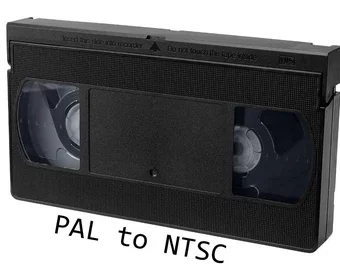Converting PAL and SECAM tapes to NTSC can be a challenging process! But it is often necessary for people who want to watch videos recorded in different regions. In this blog post, we’ll explore the benefits and challenges of converting PAL tapes.
The Benefits of Converting PAL and SECAM Tapes to NTSC
The main benefit of converting PAL and SECAM tapes to NTSC is that it allows you to watch videos that were recorded in different regions. PAL is the most common video format in Europe, Asia, and Australia. SECAM is still used in a few countries, including France and Russia. NTSC, on the other hand, is the most common video format in North and South America, and parts of Asia. If you have a PAL or SECAM tape and want to watch it on a North American television, you will need to convert it to NTSC.
Another benefit of converting PAL tapes to NTSC is that it allows you to preserve important memories. For example, if you have family videos recorded in Europe, you may want to convert them to NTSC. This allows you to watch them on your North American television and share them with family and friends.
The Challenges of Converting PAL/ SECAM Tapes
There are a number of factors that can affect the quality of the converted video. One of the biggest challenges is the difference in frame rates between the different video formats. PAL and SECAM have a frame rate of 25 frames per second. However, NTSC has a frame rate of 30 frames per second! This difference will cause the converted video to look choppy or jerky.
Another challenge is the difference in resolution between the different video formats. PAL and SECAM have a resolution of 625 horizontal lines, while NTSC has a resolution of 525 horizontal lines. This difference can cause the converted video to look blurry or pixelated.
Finally, there is the challenge of color encoding. PAL and SECAM use a color encoding system called YCbCr, while NTSC uses a color encoding system called YUV. This difference can cause the converted video to look washed out or have incorrect color balance.
The Conversion Process
The conversion process for PAL and SECAM tapes to NTSC typically involves three steps: video transfer, video encoding, and video playback. Video transfer involves transferring the video from the PAL or SECAM tape to a digital format. This can be done using a video transfer service or a video capture card.
Video encoding involves converting the video to the NTSC format. This can be done using video encoding software. This will convert the video’s frame rate, resolution, and color encoding to the NTSC standard.
Finally, video playback involves playing the converted video on a North American television. This can be done using a DVD player or a media player that supports NTSC playback.
Conclusion
Converting PAL and SECAM tapes to NTSC can be a challenging process. But, it is often necessary for people who want to watch videos recorded in different regions. The main benefits of converting PAL and SECAM tapes to NTSC are the ability to watch videos from different regions and the ability to preserve important memories. However, the conversion process can be complicated and may result in a loss of video quality due to differences in frame rate, resolution, and color encoding. If you are planning to convert PAL or SECAM tapes to NTSC, it is important to work with a video transfer service or other professional to ensure the best possible results.
Click here if you have Betamax!

